Breeds Corgi News & Entertainment
The Latest Dog Trend That’s Breaking the Internet: Why Everyone’s Obsessed with Corgis With Tails
The Internet has been obsessed with Corgi butts for years now—those irresistible, gravity-defying, fluffy rear ends are something to behold! But, dog lovers now have a new Corgi-based obsession: Corgi tails!
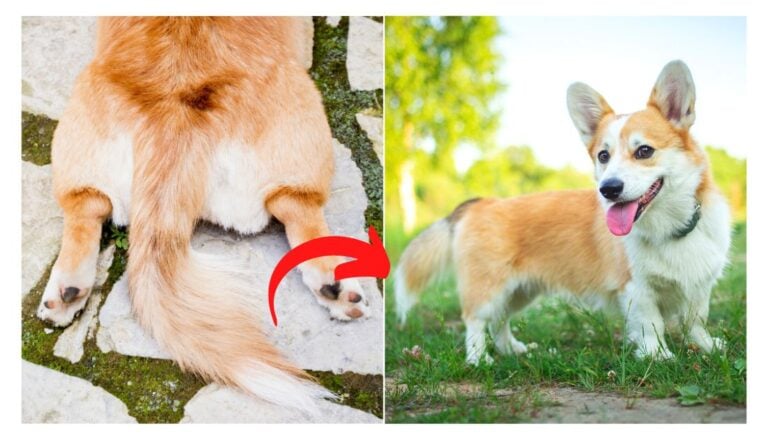
Instead of the bobtail look you’re probably used to seeing on the average Pembroke Welsh Corgi, these are Corgi with long tails that add so much to their personality and emotional expression. But, did you even know Corgis can have these luxurious, fluffy tails? Are corgis born with tails usually, or is a Corgi with a tail some kind of genetic anomaly?
Get ready to meet some Pembroke Welsh Corgi with tails intact, and learn the breed’s history that led to the controversial practice of tail docking.
Meet 7 Corgis with Long Tails from Instagram
Get ready to meet a bunch of Corgi with undocked tails who are not only adorable but also Instagram-famous! These pups have racked up thousands of followers who are just as obsessed with their fluffy tails as we are.
1. Ollie

Ollie (left) is a super cute Corgi dog with tail intact who is living his best life with his brother Butler, a Corgi who has no tail. Ollie and Butler have more than 50K followers, but all they care about is having as much fun together as possible!
2. Mia and Ganon

What’s better than one fluffy Corgi with tail intact? TWO fluffy Corgis with long tails! Mia and Ganon are gorgeous long-tailed Pembroke Welsh Corgis from Melbourne, Australia. Don’t their gorgeous fluffy tails look like happy wagging flags? Mia and Ganon have more than 40K followers on Insta, but they’re not letting the fame get to their heads.
3. Ghost & Laser
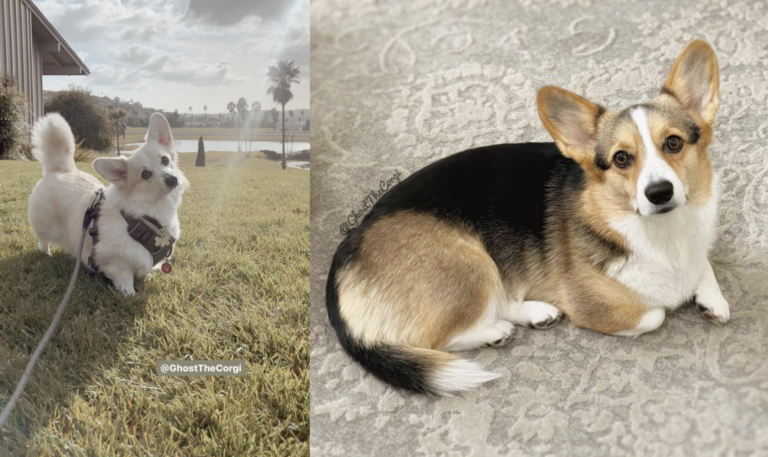
Meet two long-tailed Pembroke Welsh Corgi sisters who live in sunny Los Angeles, California! Ghost (left) is a cream Corgi while her sister Laser (right) is a tricolor Corgi with tail intact. Name a more adorable duo—we’ll wait and watch their 45K follower count keep growing!
4. Oliver (From NYC)

This handsome boy is Oliver, and just look how much personality his long tail gives him, even in a still photo! A New York City dog with a fast-paced lifestyle, Oliver is a four-year-old Pembroke Welsh Corgi with a natural tail and 2K Insta followers—and growing.
5. Oliver (From The Netherlands)

Another long-tailed Corgi named Oliver is in this mix, and this time, he’s from The Netherlands! Here you can see Oliver demonstrating the Corgi sploot which is even cuter with a long, fluffy tail.
Pembroke Welsh Corgi with Tail Basic Info
If you’re still wondering: are Welsh Corgis born with tails? Don’t worry, we’re going to answer your question soon!
First, let’s talk about what life with a Pembroke Welsh Corgi looks like—these little herding dogs are so lively and cheerful, but they aren’t the right breed for everyone. Take a look at some of the key features of the Pembroke Welsh Corgi and consider whether your lifestyle fits well with this breed’s needs.
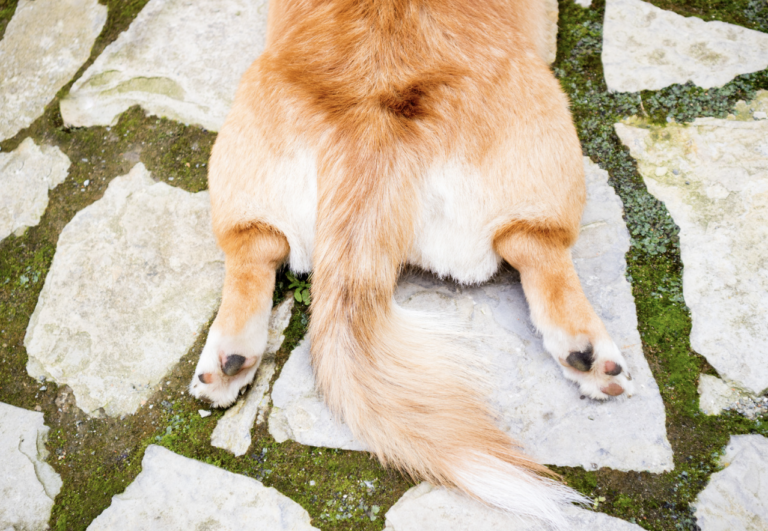
Pembroke Welsh Corgi Temperament
One of the smallest members of the herding dog group, the Pembroke Welsh Corgi is an athletic, energetic, and alert little dog that can keep up with larger breeds, despite its short legs. Bred to herd livestock in the sometimes treacherous Welsh countryside, Pembroke Welsh Corgis will chase almost everything, and have a fairly high prey drive. Smart, independent, and sometimes bossy, Pembroke Welsh Corgis are quick to take command in a situation where they don’t see an obvious leader.
“[Corgis are smart and sly [and] in my experience they are quite competitive and require a lot of time. Without training they are naturally bossy around other pets and do not hesitate to [pick fights with] dogs/cats,” says a comment from a Reddit user who has lived with Corgis. In some cases, Corgis also like to boss around their humans, children in particular which can make them a bit of a nuisance with small kids.
A Corgi that gets adequate exercise and mental stimulation is a happy Corgi, and happy Corgis are affectionate and social. Often very open to strangers when appropriately socialized from a young age, Corgis are a riot at dog parks, when guests come over, and in everyday life.
Corgis are also very watchful and can be territorial of their humans, home, and resources (food, toys, beds, etc.) For some Corgis, this can turn into anxiety and reactivity, which is why early socialization is imperative for this breed. Because they are sometimes high-strung and require all-day attention, this is not a breed for a busy business person or anyone whose responsibilities would prevent them from fully enriching a Corgi.
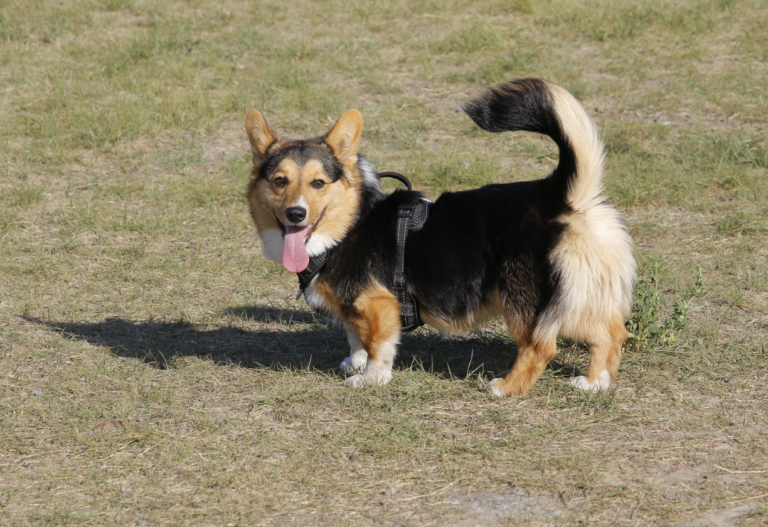
Pembroke Welsh Corgi Size
Pembroke Welsh Corgis are a medium-sized dog breed, but their height might tell you otherwise! The typical Pembroke Welsh Corgi stands around 10–12 inches tall and weighs around 30 pounds.
Pembroke Welsh Corgi Health
The most common health issues that affect Pembroke Welsh Corgis are joint and back problems. Because of their unique physiology, it’s important to protect your Corgi’s short legs and long bodies by keeping them from making big jumps and feeding them a proper diet.
Some other health issues to consider if you own a Pembroke Corgi with tail or without include:
- Eye and vision issues
- Heart problems
- Cancers
Where To Find Pembroke Welsh Corgi Puppies with Tails
Many Corgi breeders in the US and abroad are moving away from tail docking in favor of natural-tail Corgis! To find a breeder who keeps the tails of their puppies intact, we recommend starting with a quick Google search for breeders near you. If you can’t find a breeder online, an equally good if not better option is to consult with other owners of Corgis with tails.
No matter who you buy your Pembroke Welsh Corgi puppy with tail intact from, spend the time to do your research and ensure they are experienced, ethical, and reputable.
Once you find a Corgi with tail for sale, expect to pay around $1,000–$3,000 for your puppy.
Pros & Cons of Corgi Tail Docking
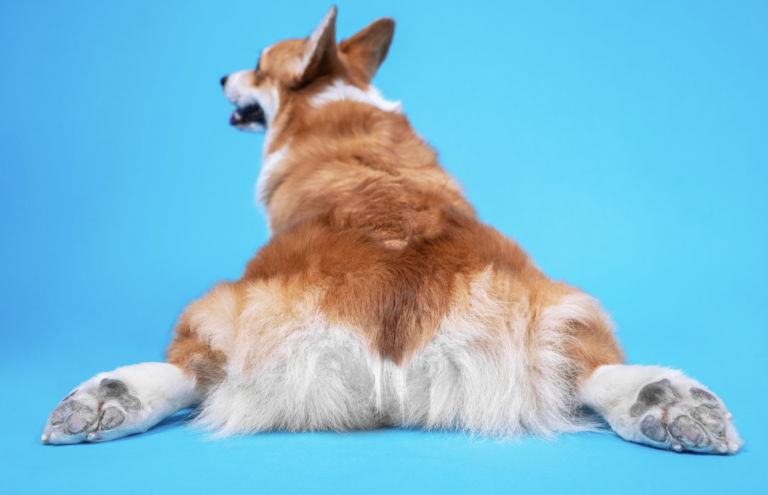
A lot of people don’t think twice about dogs with docked tails—after all, removing the tails of certain dog breeds is just normal, right?
When you take a moment to question the practice of tail docking, you will inevitably come up with a few questions. There must be a good reason to dock a dog’s tail, right? Why would we normalize removing dogs’ tails if it wasn’t for the good of the dog? Are Pembroke Welsh Corgis born with long tails, or are some born with short tails?
Let’s get into the not-so-nice history and controversy surrounding canine tail docking.
Are Pembroke Welsh Corgis Born with Tails?
If you’re in a rush, here’s a quick answer to your question.
Q: Are Pembroke Corgis born with tails?
A: Yes! Most Pembroke Welsh Corgis are born with long tails.
Pembroke Welsh Corgis are typically born with long tails, but “breed standards” from official dog registries like the American Kennel Club call for the breed to be bobtailed. But, why would the breed standard of a dog include features they aren’t born with?
Theoretically, the origins of tailing docking come from ranchers who chose to dock the tails of working Pembroke Welsh Corgis to prevent them from sustaining injuries from the cattle. The idea was that a long tail “served the dog no purpose” but was a liability to be stepped on, trapped, or otherwise injured while the dog worked.
Today, the process of tail docking is almost exclusively cosmetic, as the vast majority of Pembroke Welsh Corgis are everyday pets and not herding dogs. Nevertheless, breed standards for the Pembroke Welsh Corgi call for a bobtail.
There are some Pembroke Welsh Corgis born without tails—these are called natural bobtails. See more about these pups in the FAQ.
Pros of Docking Corgi Tails
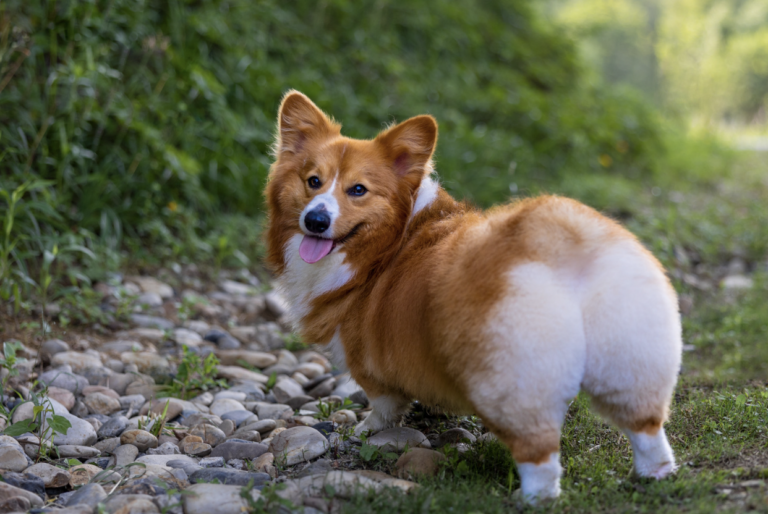
While some might consider “conforming to breed standards” a point in favor of tail docking, we think this is unnecessary for everyday dog owners. The average person does not want their dog to participate in dog shows. We also believe that the breed standards set more than half a century ago should be reconsidered for naturally long-tailed dogs expected to appear in the show ring with a bobtail.
This said, there are two instances in which it may be more beneficial for the dog to have their tail removed than preserving their natural length.
1. Preventing Working Dog Injuries
It is true that for some working dogs—herding dogs in particular—having a long tail can be hazardous. Tails run the risk of getting caught in fences, machinery, or under the hooves of livestock, and sustaining a tail injury while working could be both physically and psychologically damaging for the dog. Some herding dogs do completely fine with their tails, but this is a consideration to make especially for dogs working with large livestock like cattle.
2. Post-Injury Tail Amputations
Some dogs require amputation of their tails following a serious injury when the tail cannot be saved. In some cases, amputation can prevent infection or systemic disease or may be the most cost-effective and gentle option for the dog to heal quickly. Tail amputations should not be performed lightly, and most vets will try to preserve a dog’s tail following an injury.
Cons of Docking Corgi Tails

We could probably go on for quite a while about the issues with removing Corgi tails, but we’re boiling it down to four main points. These are the most prominent and potentially serious negative effects of docking tails.
1. Tail Docking is Painful
Despite what some people may say, tail docking is painful not only during the procedure but also after it. The physical pain can be extremely distressing, and some puppies—especially those whose tails are docked improperly—can develop emotional trauma following the event.
The healing process is also painful, and for some dogs, the healing process never brings relief.
2. Post-Surgery Complications
Dogs that have their tails removed run the risk of developing infections, excessive bleeding, and nerve damage which can cause severe pain and delayed healing.
3. Long-Term Complications
Unfortunately, some dogs experience chronic health issues caused by their tail docking like chronic sensitivity in their hind end, underdeveloped pelvic muscles, phantom limb syndrome, and even chronic pain. Some dogs that have their tails docked can even become incontinent.
4. Loss of Key Communication Tool
Dogs use their tails as one of their number one communication tools. Wagging isn’t the only thing dogs do with their tails, they also use them to tell each other when they want to play, if they are feeling uncertain, want more space, and so much more. Losing a tail is almost like losing your voice in the dog world, and dogs with cropped tails may struggle in social situations.
Is Tail Docking Cruel?
Yes. Not only is removing the tail of a puppy unnecessary, but it can also be painful and have life-long consequences for the dog.
Pro-tail-docking advocates may spread the myth that when puppies are young enough to have their tails docked, they do not have a fully developed nervous system, and do not feel the pain of the amputation. This is an outright lie. Tail docking is painful no matter how young the puppy is.
Even if tail docking was somehow painless—which it isn’t—the plethora of negative side effects of tail docking are enough to confirm that cosmetic docking is cruel. Today, many veterinarians in the United States and abroad refuse to perform cosmetic tail docking.
Pembroke Welsh Corgi Tail FAQ
Are Cardigan Welsh Corgis born with a tail?
Yes! Cardigan Welsh Corgis are a different dog breed than Pembroke Welsh Corgis, but because they descend from the same ancestors in the same region, they look similar. Like Pembrokes, Cardigan Welsh Corgis are born with tails, and a Cardigan Welsh Corgi with tail intact is in line with breed standards.
So, why are Cardigan Welsh Corgi with tails allowed, but Pembrokes need to have their tails docked to conform with breed standards? No clear answer exists, and this argument is a compelling one against Pembroke Welsh Corgi tail docking practices.
What are naturally bobtailed Corgis?
Natural bobtail Corgis are Corgis born with short tails. Producing fully developed Corgi puppies born without tails is achieved through genetic testing and precise dog pairings. A naturally occurring mutation of the T gene causes dogs typically born with long tails to be born with short, or nearly non-existent tails. In Western Europe in particular, if you see a Corgi with no tail, you assume it is likely a natural bobtail.
There is some debate regarding the ethics of producing natural bobtails. When a puppy inherits one copy of the gene mutation, the only effect is a shorter tail. When a puppy inherits two copies of the gene, they typically don’t make it to full term. If they do, they are often underdeveloped or are so deformed that they are considered “incompatible with life” and do not survive.
Careful genetic testing to avoid pairing two dogs that carry the bobtail gene can prevent this, but this requires integrity on the part of the Corgis breeders, which is why buying from ethical breeders is so important.
Related Articles:
- These 19 Corgi Butts Might Break the Internet
- 4 Best Dog Food Brands for Corgis & Corgi Puppies
- Are Corgis Hypoallergenic? The Truth About Corgis and Allergies
- Meet the Corgipoo: The Adorable Canine Hybrid That’s Captivating Dog Lovers Worldwide!
- How Much do Corgis Shed? A Guide to Corgi Shedding and Management



